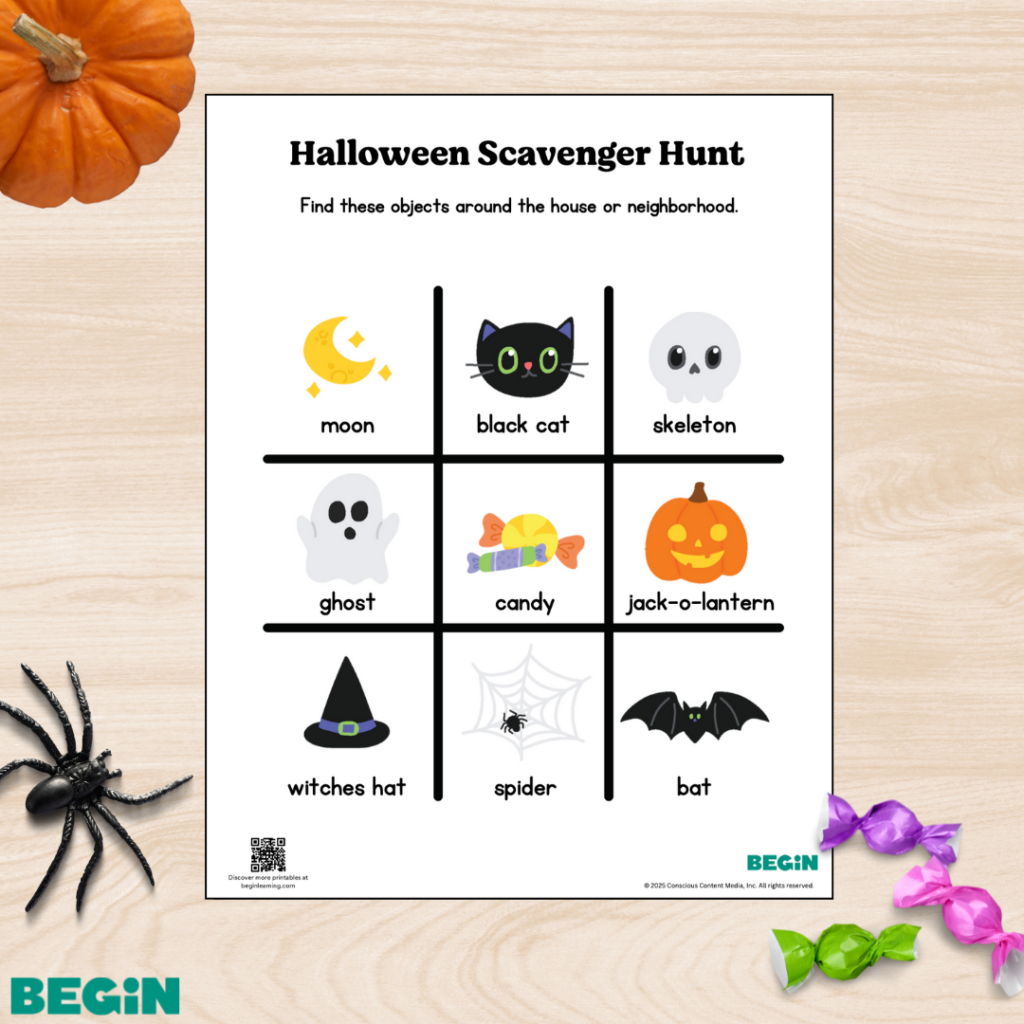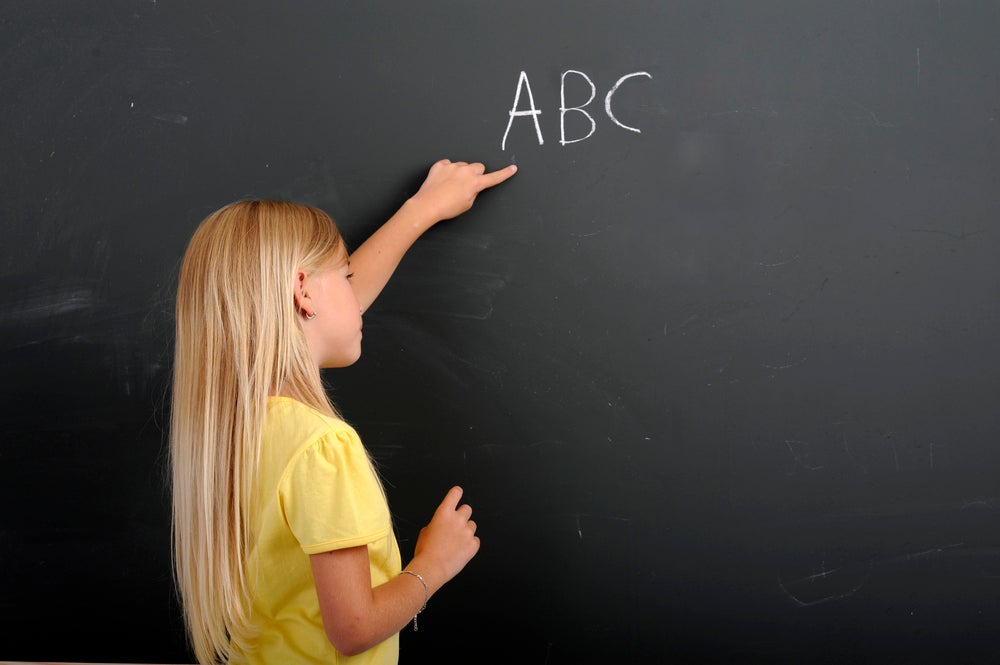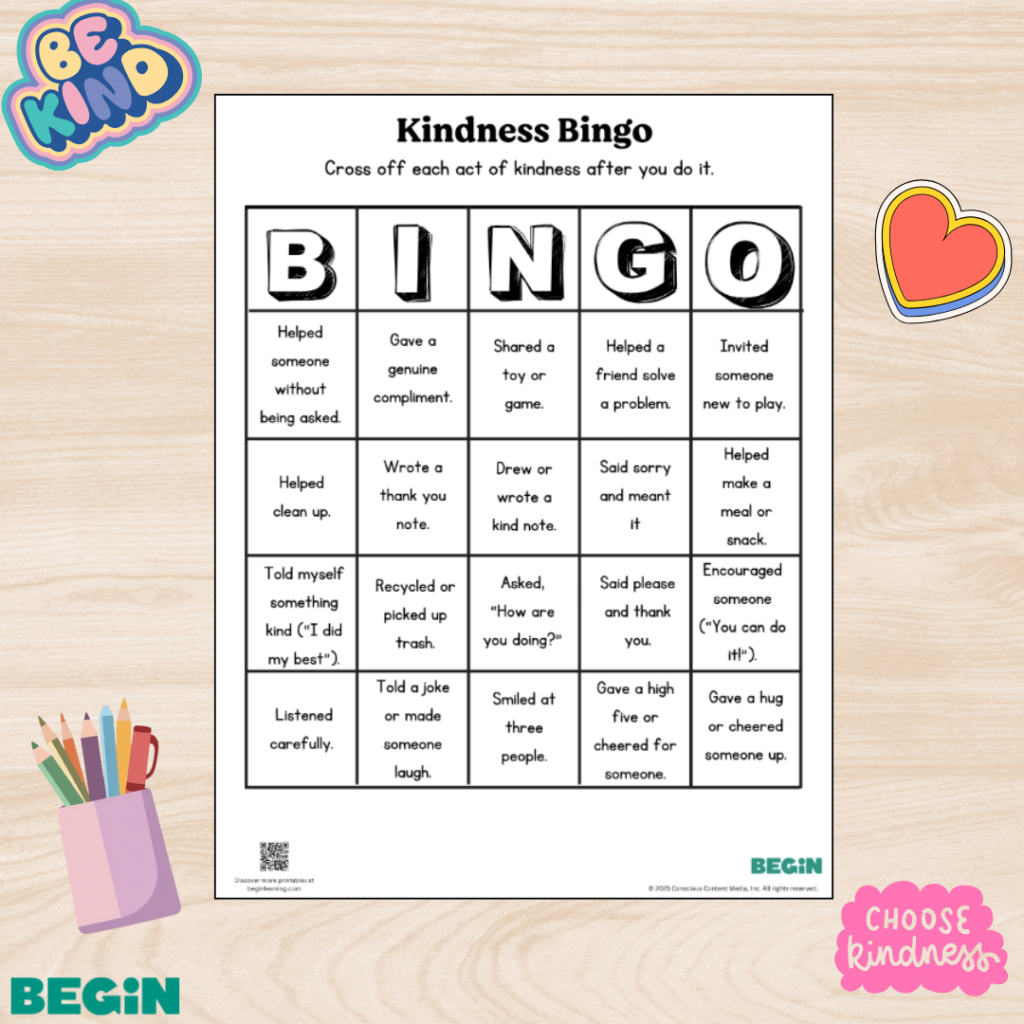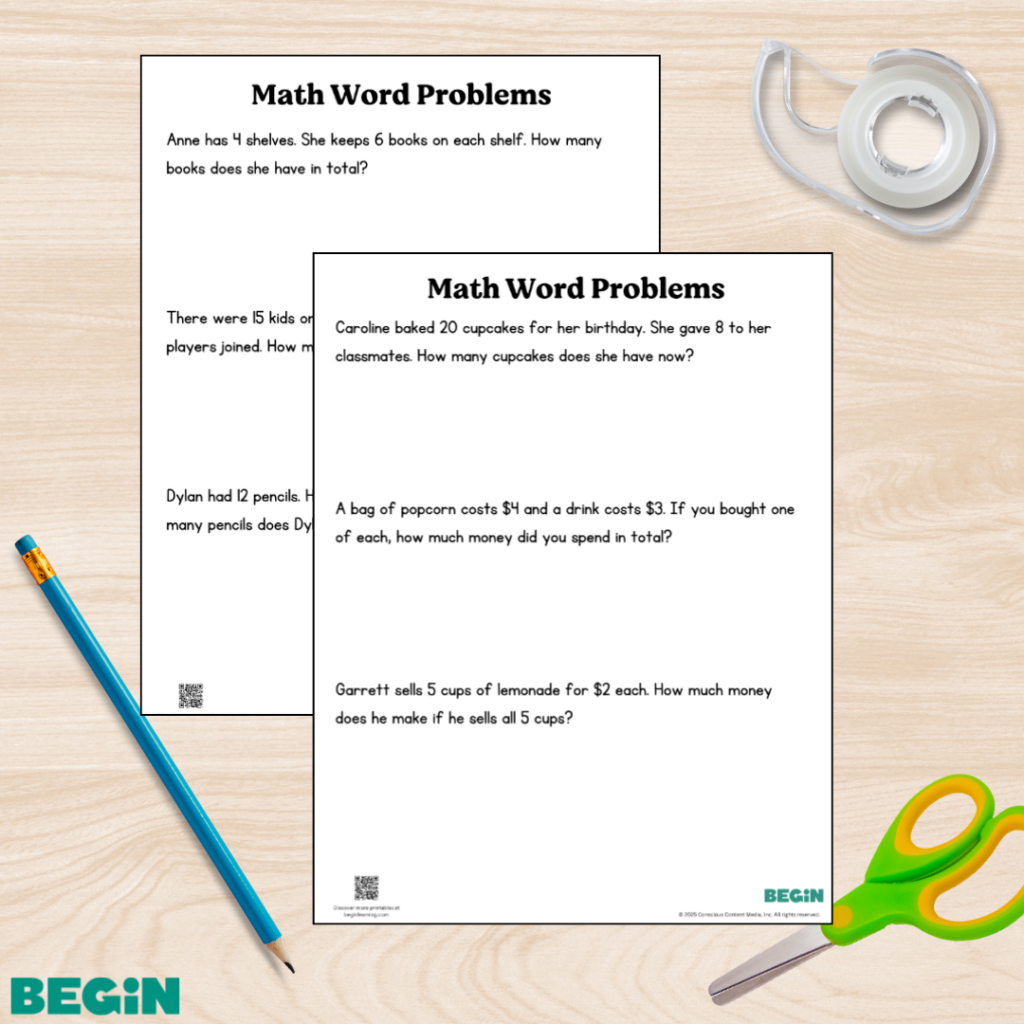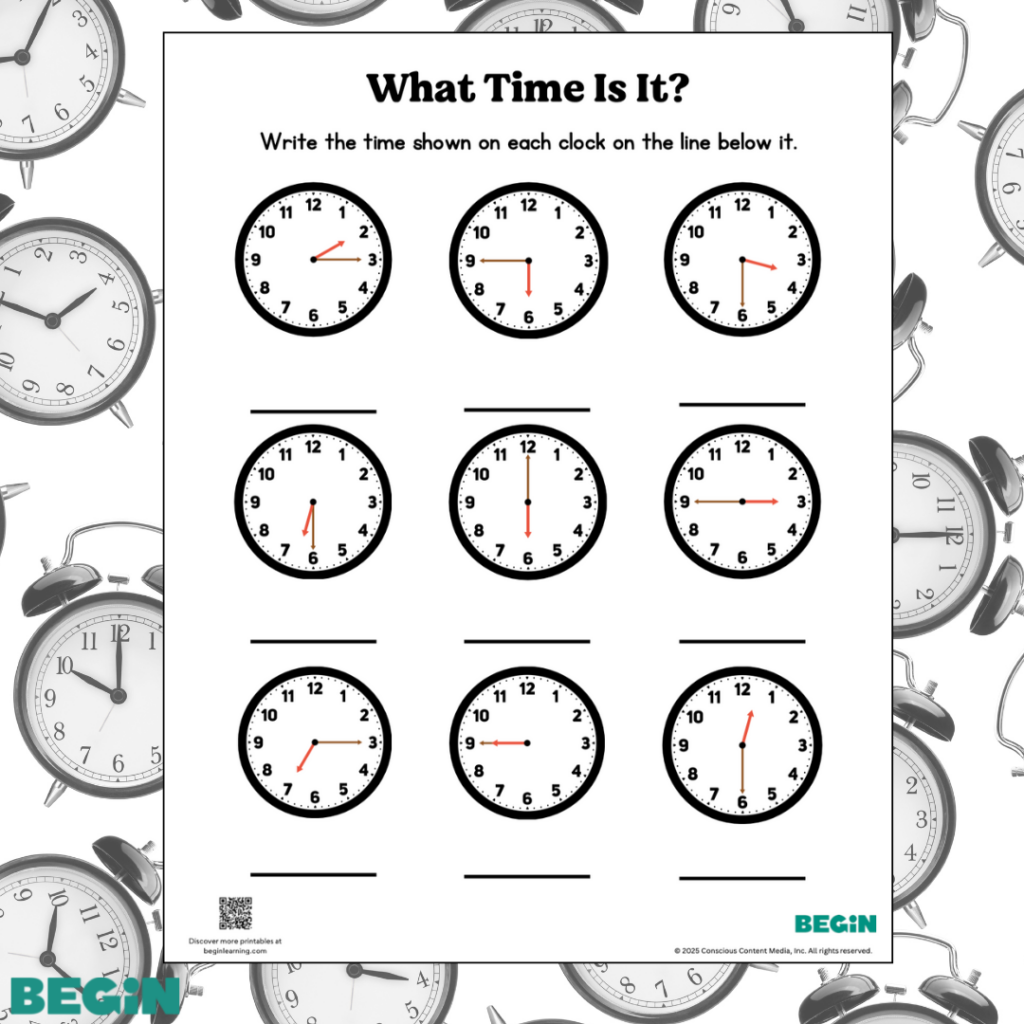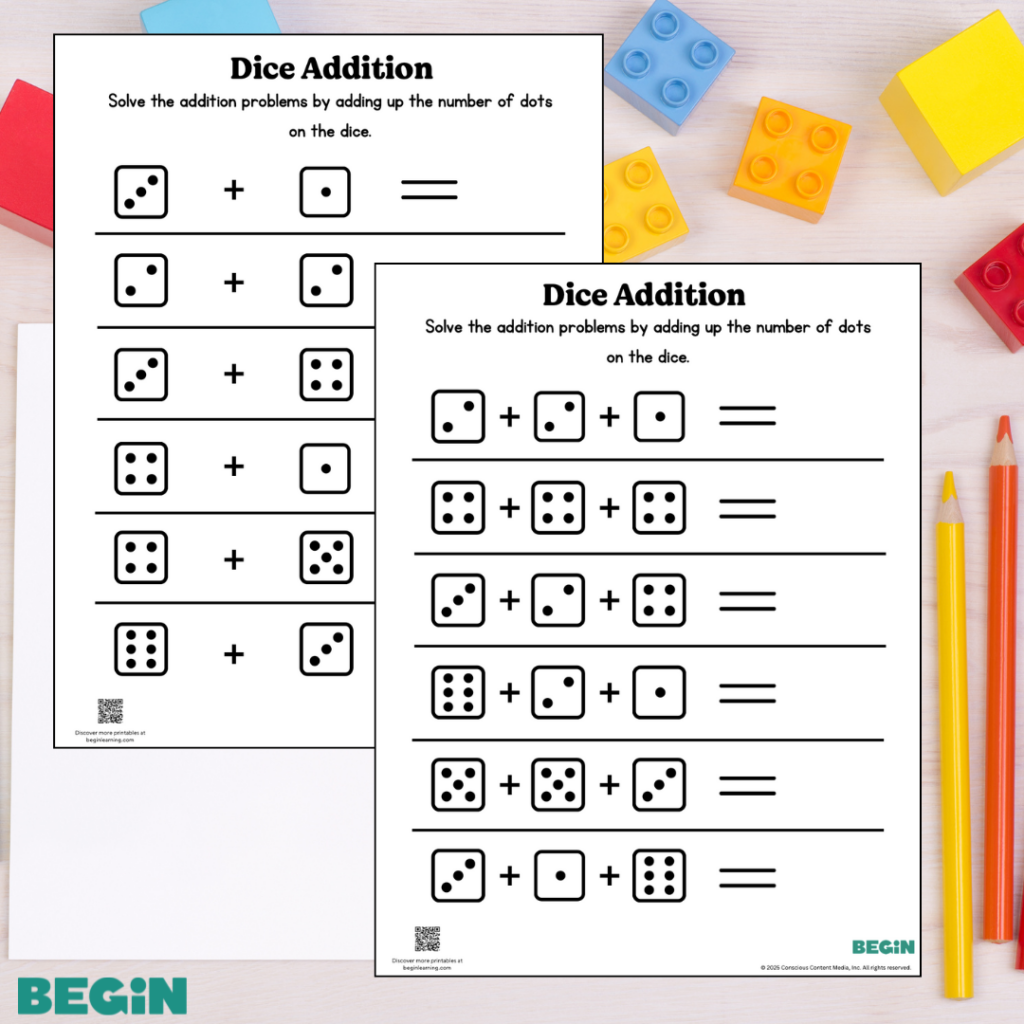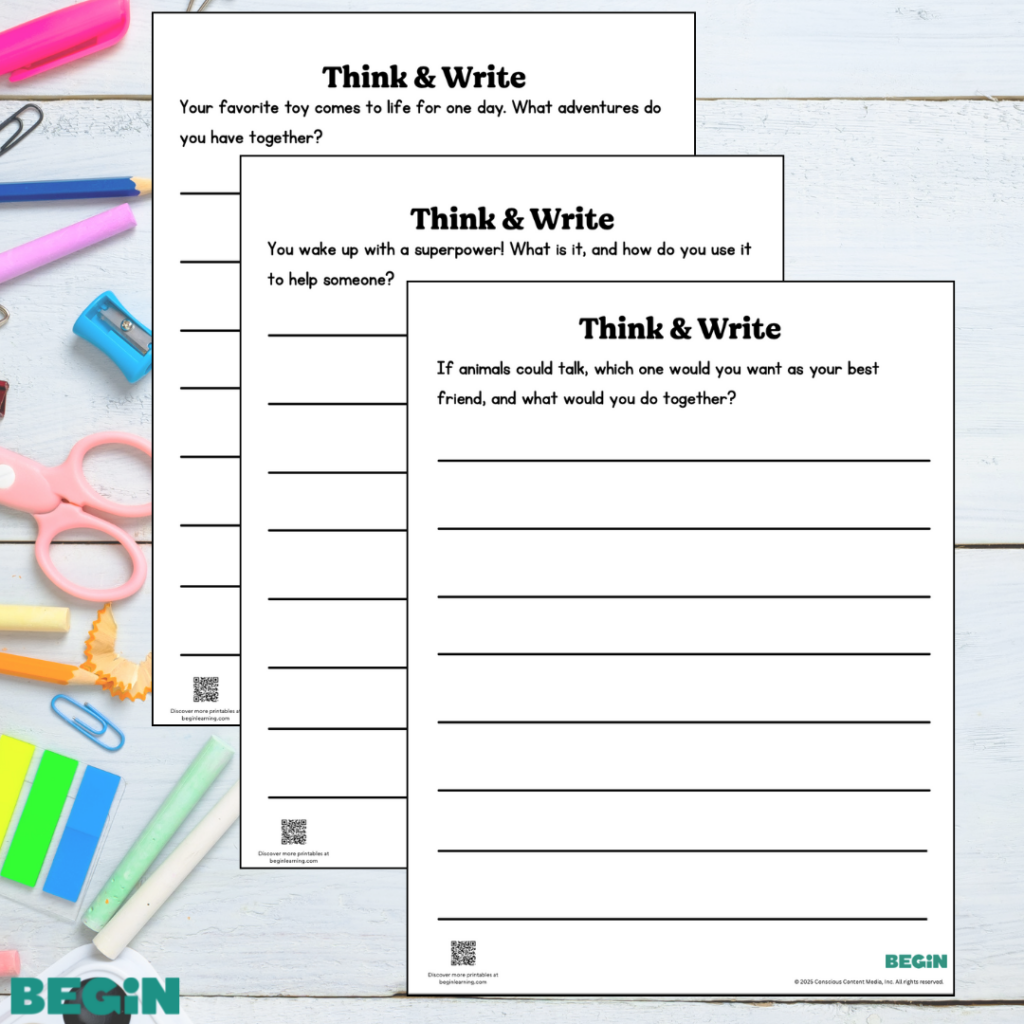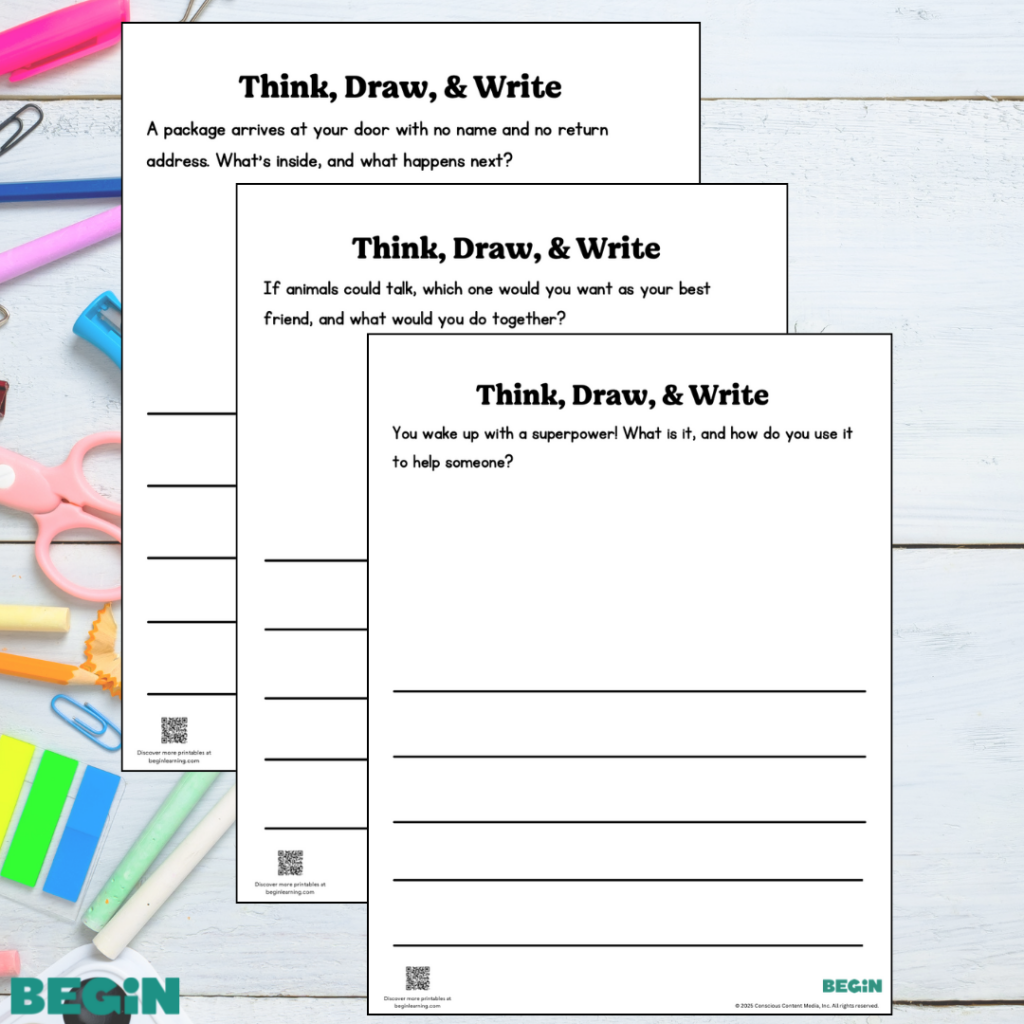Reading isn’t a task that comes naturally for most children. Instead, they need to be taught to read. Recognizing words easily is one of the first steps on the path to a love of reading and learning. And using phonics can help you get the ball rolling for your child!
Phonics—which, at its core, is the linking of sounds to letters—is a fundamental part of reading. Even without noticing, you use phonics every time you see a new name or an unfamiliar word to figure out how that word should be pronounced.
That said, we understand that helping your child with phonics might be a little overwhelming at times. The good news is, in this article, we share easy and fun ways to help your child develop foundational phonics at home!
We break it all down for you: what phonics is, the benefits of adding it to your child’s learning journey, and when (and how!) to introduce it.nefits of adding it to your little one’s learning journey, and when (and how!) to introduce it.
Table of Contents
- What Is Phonics and How Does It Work?
- Why Use Phonics to Help Your Child Read
- When to Introduce Your Child to Phonics
- Phonological Awareness Checks
- How to Encourage Phonological Awareness
- Steps for Teaching Phonics
- Tips for Supporting Your Child’s Learning

What Is Phonics and How Does It Work?
We’ve all occasionally been stumped by a long, unfamiliar word or two and have had to “sound it out.”
This is phonics at its core—the relationship between letters and sounds. It’s a method of instruction that teaches children to see a letter and attribute a sound to it or hear a sound and match that sound with a letter.
To give you a better idea of how phonics works, we need to talk about the alphabet a bit. The alphabet is simply a collection of symbols we call letters that we match to sounds. In English, each symbol (or letter) can be matched to one or more sounds.
Phonics is the heart of the alphabetic code. It helps your child as they learn to read and write by helping them pair sounds with letters.
Why Use Phonics to Help Your Child Read
Phonics is an essential tool for learning to read in any language that uses an alphabet to write words. In English, a large proportion of words, especially words beginning readers encounter, follow the rules of the alphabetic code. These words are considered phonetically regular.
You can find examples of this everywhere—think of letters like the e in bent or the a in sat. These letters sound and behave the way you would expect (and make for some pretty poetry in a pinch).
Other words behave irregularly. Think of words like yacht, isle, or women. If you sound out the individual letters using their most common sounds, the words become almost impossible to understand. Another example would be the word was rhyming with buzz instead of has.
This can be confusing for young kids who are just beginning to read. Because of that, phonics focuses on introducing children to words with regular sounds.
By beginning with the basics, your child will gain the confidence they need to become a strong, enthusiastic reader!
Adding phonics to your child’s tool belt will become especially helpful once they begin to read longer words. Knowing to sound out words when they’re stuck will help them break multisyllabic words into bite-sized snacks for their brains.
A foundation in phonics can be a safety net for your child to fall back on when they eventually start to read on their own. They’ll know that by breaking words down and sounding them out, they can read just about anything!

When to Introduce Your Child to Phonics
Kids can begin learning phonics as early as three or four years old, though they are usually introduced to phonics when they start kindergarten. How do you know if your child is ready to jump on the phonics train?
There are two major milestones to watch for:
- Your child can read and recite the alphabet.
- They show some ability and interest in phonological awareness tasks such as playing with words, sounds, and language.
Phonological Awareness Checks
Phonological awareness sounds complicated, but actually, most children develop it naturally over time. You can easily understand where your child is in their phonological-awareness journey as you go about your day (and they won’t even see it coming!).
If you’re wondering which level of phonological awareness your child is on, you can try these activities.
Rhyming
You’re probably already doing this naturally, as saying nursery rhymes and singing rhyming songs help kids develop an awareness of rhyming.
To find out how confident your child is with rhyming, you can ask them if two words rhyme or do not rhyme (cat and rat, or cat and net?). For younger kids, give them a head start by saying a few words that rhyme so they have an idea of what to listen for.
If your child needs a little help, consider turning it into a fun game by testing each other’s skills. You could make it silly by occasionally making mistakes on your turn and saying, “Oops, that doesn’t rhyme!”
Segmentation
For this activity, have your child clap for each word they hear in a sentence. You can make it fun by turning it into silly singing time and singing the words as your child claps to them!
By choosing phonological awareness checks that are fun and challenging, you can easily get a good idea of where your child is on their reading journey.
If you’re looking for additional support, you might consider signing up for a free trial at HOMER, our award-winning early learning app.
After answering a few simple questions, you’ll receive a learning path for your child that fosters phonological awareness and, when the time is right, teaches children to read and spell. You will also have access to great stories that are just right for your child!

How to Encourage Phonological Awareness
We believe in fun, personalized, and engaging early learning for your child. So what better way to encourage phonological development in your child than with games?
After deciding what aspect of phonological awareness you’d like to focus on, you might try one of these games to help give your child an extra boost of confidence—all while you’re already spending time laughing and bonding with one another.
No extra work or hour-long recitations required!
A Rhyming Game
Gather a basket of small toys or pictures of objects with names that rhyme (cat, hat, bat, mat, and so on).
Hold up an object and begin the rhyme by saying something like, “In my hand, there’s a bat.” Then say, “Your turn!” and encourage your child to find a toy that adds to the rhyme. (“In my hand, there’s a hat.”).
A New Twist on an Old Song
For this game, you can rely on a tradition from when you were a kid––the Old MacDonald song! Except this time, you’ll be playing a funnier version with your child.
During the part of the song when everyone yells, EEH-EYE-EEH-EYE-OH, have your child replace the letters with the name of an animal, even if it’s not the exact same amount of syllables. For example: kit-ty-kit-ty-cat or goat-y-goat-y-goat.
This gets your child working on syllable segmentation without even knowing it. They’ll be cracking themselves up while still developing their skills—and a love for learning!

The Wrong Words
Not only will this next game make your child laugh, but it will also help give them tons of confidence—because they’ll be correcting your silly mistakes!
Choose a nursery rhyme your child is familiar with, like “Jack and Jill” or “I’m A Little Teapot.” Sing with them, but when it’s time for some of the iconic rhymes, start messing up the words.
Your child will probably laugh and correct your rhyme. Without them even realizing it, this game encourages your child to listen carefully for the right sounds.
Plus, it’s a simple way to incorporate phonological awareness, the foundation for phonics, into your daily routine! You can sing while cooking dinner, driving around town, cleaning up the house, or anything else on your to-do list.
Reading to Your Child Often
Reading to your child isn’t a game but, rather, an everyday activity that will help enhance their phonological awareness. The more you read to them, the more they’ll recognize the sounds, syllables, and rhymes in a story.

In effect, with each book they listen to, they become more phonologically aware. So keep reading to them whenever you get the chance!
And when you do read to them, make the story as exciting and engaging as you can. Opt for rhyming books or those that repeat the same sound, and when you hit a rhyme, point it out.
Also, be sure to enunciate when you read so your child can easily hear the sounds. While you’re at it, you can play with the pitch of your voice—or even try changing your voice for each character in a story—to keep your child’s interest.
For more game and activity ideas that go beyond a typical learning program and serve your child’s unique interests, check out our activities!
Steps for Teaching Phonics
Once you’ve established your child’s phonological awareness, it’s time to start teaching them to read. This should be done systematically, only moving to the next step once your child has mastered the prior skill.
1) Introduce the Sounds
The first step in teaching phonics is to introduce the different sounds that each letter represents. At this point, you’re focusing on the sounds only—not the letters. It’s good to begin with simple hard consonants—often S, A, T, P, I, N.
These letters can be combined into many different three-letter words and will provide a good foundation for when your child starts blending sounds and reading words.
Of course, learning the sounds takes practice, and there are lots of ways to do it. You can play rhyming games, similar to those you played while developing their phonological awareness, where you say a word and your child tells you a word that rhymes.
At this stage, it doesn’t matter whether the word they say is an actual word. If it rhymes, then they’ve understood the sound.
You could also play games focused on the first letter sounds of words. Start with familiar words—maybe their name, their sister’s or brother’s name, or the dog’s name—but then build up to anything around you. Hold up a fork or point to the TV, for instance.
Whatever you do, it doesn’t have to be a big song and dance—you can practice during those in-between times of the day, like when you’re walking to dance class or preparing dinner.
2) Blend Sounds
Once your child understands the different sounds, then it’s time to try to blend those sounds together. Break down simple words—like sit, nap, or pat—to the component sounds, and encourage your child to try to blend the letter sounds.
It might be a little clunky at first, but before long, they’ll get the hang of it!
3) Connect Letters and Sounds
Now that your child knows the different sounds, it’s time to bring out the letters they correspond to. Pre-readers must understand that each word is a composition of unique sounds made by the letters.

You may want to get a magnetic alphabet and point at letters while making their sounds. Have your child copy you to practice. You could even play hide and seek. Ask your child, “Can you find the sssss sound?” If they return with the missing S, they’re on their way!
Once they know what sounds each letter makes, they’re another step closer to reading.
4) Incorporate Digraphs and Blends
Now you want to start bringing in single sounds made up of a combination of letters (think “sh” or “ch”) and blended letters, where you can hear both sounds but they roll off the tongue easily (“cr” or “st”). See if your child can sound out “stop” or “shop.”
5) Practice Decoding Words that Follow Phonics Patterns
It’s time for your child to practice what they’ve learned! From casual practice in the house to worksheets and computer games, there are lots of ways they can reinforce these basics.
Before you move on to more irregular and complex sounds, it’s important to have a strong foundation in the simpler ones.
6) Introduce Complex Patterns
Once your child is ready, you can move ahead to more complex concepts in letter sounds, such as long vowels, vowel combinations, silent letters, and words that are not pronounced as they’re spelled.
7) Keep Practicing
Especially for these trickier words and sound variations, practice is key. Luckily, there are lots of games and activities that can help. The HOMER app by Begin provides a research-based step-by-step pathway that has been proven to increase early reading scores by 74%.
Our playful activities are not only fun but also effective for learners at any stage!
Tips for Supporting Your Child’s Learning
Learning to read is not easy, and it’s likely that at some point your child will feel frustrated. If this happens, there are things you can do to help. Let’s take a look.
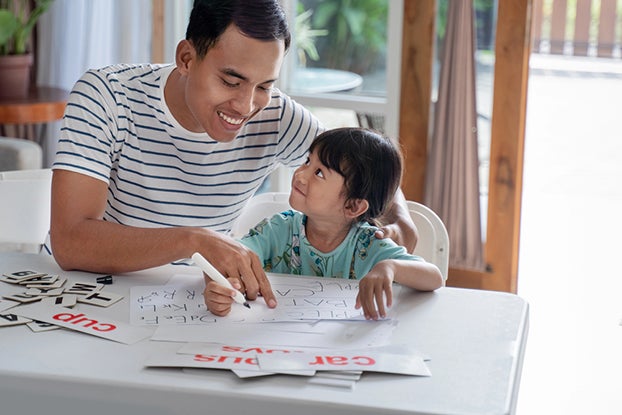
Follow a Process
As we said, make sure you’re working systematically. Assess your child’s phonological awareness, and once they are ready, tackle the simpler sounds. Don’t move ahead to more complicated sounds and patterns until they’ve shown mastery of the simpler ones.
As excited as you both are for your child to become a reader, overdoing it can be counterproductive. Thirty minutes a day is a good rule of thumb. Teaching for too long, going too fast, or introducing harder sounds too early can result in frustration.
Use Plenty of Tools
Make learning multisensory with visual, auditory, and tactile learning opportunities. Each sense can reinforce the concepts in a new way. Here are some things to have on hand:
- Magnetic letters
- Letter blocks
- Word cards
- Rhyming books
- HOMER app
- Early learning kits by HOMER
Make It Fun
Ultimately you want your child to love reading, so it’s important to make learning how to read as fun as possible. Try to engage them with games. I-Spy is always a good one—you can call out things you see that start with a certain sound.
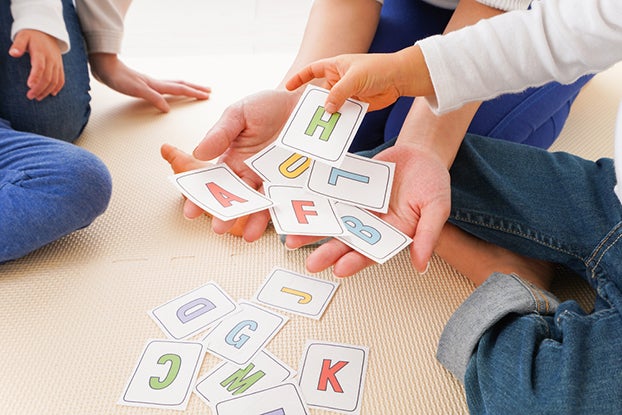
You could also name a category (girls’/boys’ names, animals, things in the house), and go down the alphabet, making the letter sound and calling out a word in the category that starts with each letter.
When you’re done, be sure to celebrate your child’s progress. And remember, if they’re tired, don’t push it. There’s always tomorrow!
Listen to Your Child
Inevitably, some concepts will come more easily than others for your child. Track where your child is getting stuck and give them extra support in those areas.
Acknowledge Their Feelings
Tell your child that you understand how they’re feeling and that it’s OK. This will help them to feel less anxious. All good things come in time.
Take a Break
Put your phonics lessons away for the day and start again tomorrow. Ask your child what they’d like to do instead. If they have some time away from the lessons, they can come back refreshed and ready to learn.
Identify the Difficulty
The next time you sit down with your child to practice, keep a keen eye on where they’re getting stuck. Identifying the specific trouble areas will make addressing them much easier.
Break Down the Learning into Smaller Bits
Try to break down what you’re working on into smaller, achievable steps. Small victories will build their confidence.
Try a New Teaching Method
Sometimes you just need to say something in a different way and it all clicks into place. If you’ve been working with worksheets, try a computer program or activity set. If the games you’re playing are getting stale, try a new one.
Celebrate Their Progress
No matter what, give your child lots of positive reinforcement for sitting down and making the effort.
Consult a Professional
If your child is still struggling with phonics after consistent daily practice or is avoiding it altogether, you might want to seek out a specialist. They have the needed experience to help your child on their reading journey.
A professional can also help assess if there’s something else going on that’s making it harder for your child to master this skill, such as a developmental delay or auditory processing difficulties, and give you additional tools and resources to address these challenges.
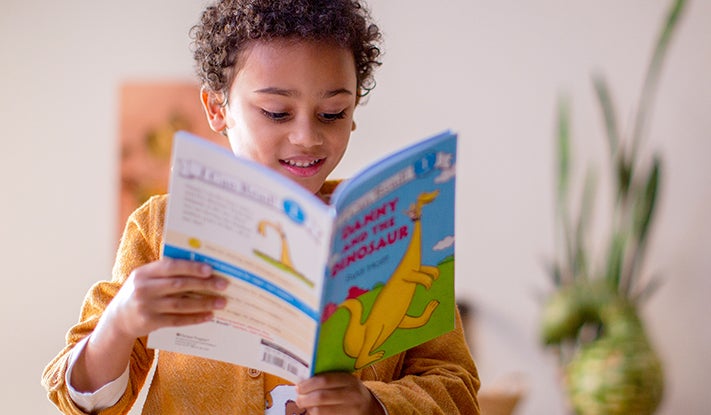
Building a Lifetime Love of Learning
Phonics is not the only way to help your child learn to read, but your child’s relationship with reading can be encouraged by a strong foundation in phonics!
That phonics foundation gives your child a strong starting point for their reading journey. As they learn to understand sounds and match them up with letters and words, they will continue to master other reading skills and develop a lifetime love of learning!
Need additional resources to boost your child’s reading confidence? Consider taking a look at the stories and activities inside our kid-powered, personalized online learning program.
From all of us at Begin, happy reading!





